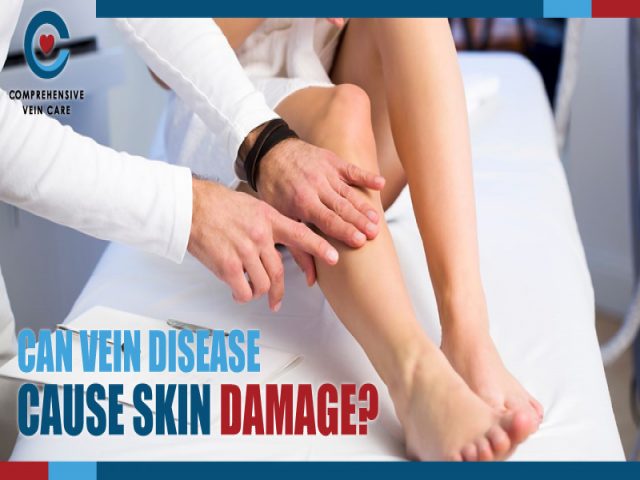Published At: 07 Jan 2020
Published By: cvc-admin

Suddenly one day, an area on your leg grabs your attention because it looks like you have bruised yourself badly. You ignore it assuming that you might have forgotten about accidentally bumping yourself, probably on a table. However, after a few weeks, you realize that the bruise is still there but now transformed from dark brown/purple to a darker shade of blue/black.
This color change in your skin might raise your concern as it doesn’t seem to heal or get better. Many people often dismiss skin discoloration as a bruise or an age spot. What you might not know is that skin discoloration can be caused by an underlying problem. You might be suffering from vein disease if you are going through skin damage with discoloration on the skin of your legs and ankles.
Skin Damage From Vein Disease
When your veins are unable to send blood smoothly from your legs to your heart, blood gets collected in the legs or ankles. This disruption of blood flow causes Venous Insufficiency and it is often due to untreated varicose veins and blood clots. The pooling of blood leads to inflammation which can contribute to swelling and skin changes.
When skin discoloration occurs, it is important to understand when to receive treatment. Keeping a close track on changes in pain or discoloration can help you assess if it is healing or worsening. It is easy to assume that discoloration or wounds might heal over time, but if not treated properly, they might progress into worse health conditions.
What Signs Should You Look Out For?
Vein disease has a few common symptoms such as varicose veins, spider veins, leg pain, cramps, swelling, heavy feeling in the legs, skin discoloration, and restless leg syndrome. Untreated symptoms can lead to skin damage in the ankle or leg and cause severe health issues.
Hyperpigmentation is a symptom that is responsible for skin discoloration. Even though this might not be life-threatening, this can be treated as a warning of severe ongoing skin damage. The condition of hyperpigmentation occurs when the blood is leaked into the skin and the iron in the blood changes the affected skin color to brown or deep purple color.
Other conditions that might signal vein disease are lipodermatosclerosis which can damage the texture of skin making it thick, leathery, and rough. The other been corona phlebectasia which is also called Blue Foot due to the bluish appearance of the foot caused by veins that are clustered around the ankle.
However, venous ulcers are known to be the most serious type of skin disease that might develop on the insides of the ankle or calves. The skin can crack into a sore or open up as a result of leaked blood around the tissues in the legs.
For patients who are suffering from vein disease and varicose veins, these are common skin conditions. Skin discoloration is not just unsightly it can cause skin damage and affect your lifestyle if untreated.
Have You Noticed A Skin Discoloration?
Don’t worry, because varicose veins and vein disease can be treated with various treatment options. But first, make sure to consult a medical professional to assess the state of your condition and to discuss suitable treatment options. At Comprehensive Vein Care, we value your vein health and we are always ready to help you lead a normal life pain-free.
Schedule your appointment today and be FREE of Vein Disease!